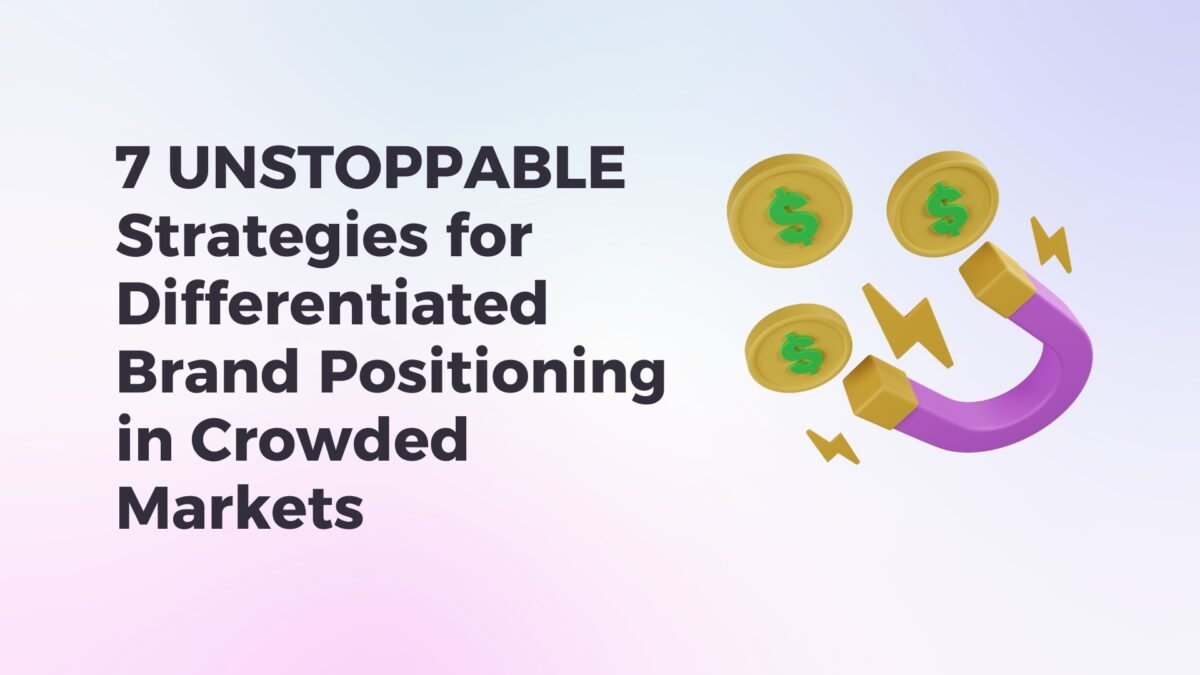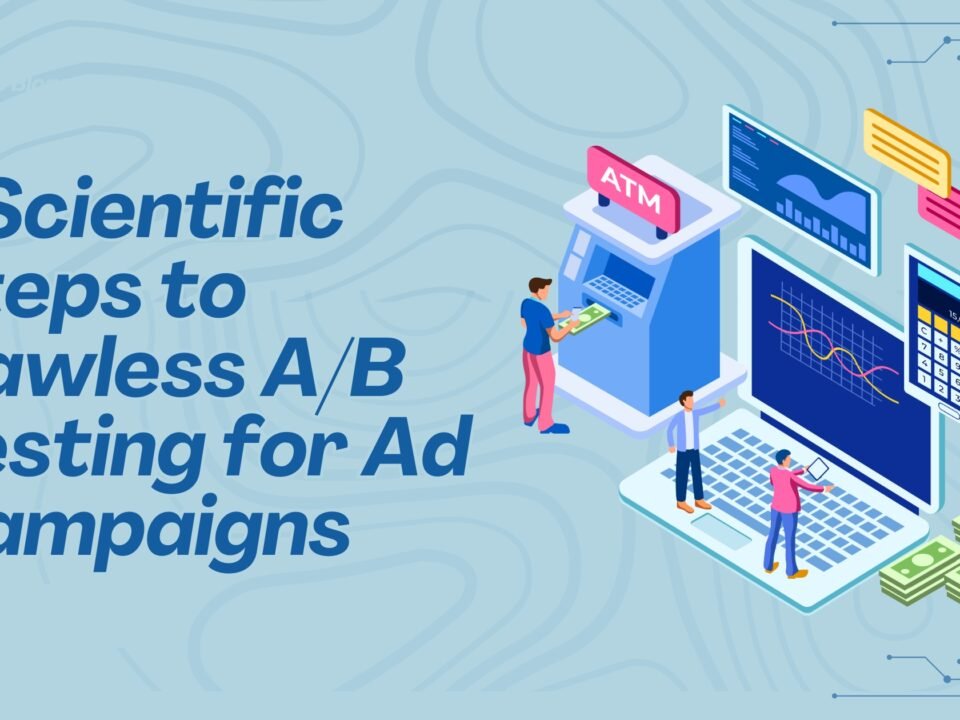
Introduction: The Urgency of Differentiated Brand Positioning (Approx. 300 words)
The modern marketplace is not just competitive; it’s a colossal echo chamber. Every day, thousands of new products, services, and digital offerings clamor for attention, making the phrase “saturated market” an understatement. For any brand—from a nimble startup to a legacy enterprise—the biggest threat is no longer a rival company; it’s anonymity. Blending in means obsolescence, and in the digital age, obsolescence is instant.
You might have a revolutionary product, an exceptional service, or a mission-driven team, but if your message mirrors the competition’s, you will fail to resonate. The solution is not to shout louder, but to speak differently. This is the absolute necessity of Differentiated Brand Positioning.
Differentiated Brand Positioning is the deliberate act of establishing a distinct, valuable, and consistent identity in the minds of your target customers. It is the single UNSTOPPABLE strategy that allows your brand to side-step price wars, build fervent loyalty, and achieve premium pricing. It’s what transforms a generic offering into an iconic choice. Without this crucial differentiation, your marketing budget is just a donation to the noise.
This curated guide is not about vague concepts; it is a tactical blueprint for creating a uniquely ownable space in any crowded industry. We will explore 7 UNSTOPPABLE strategies—from the deep-dive of Niche Dominance to the magnetic pull of Emotional Resonance—that will enable you to define a position so unique, your competition becomes irrelevant. This is how you shift from being one of many to the only one. A truly differentiated approach demands courage, clarity, and consistent execution. The journey to effective Differentiated Brand Positioning starts now.
Section 1: The Foundation of Differentiated Brand Positioning: Knowing Your Terrain
1. Own a Micro-Niche: The Strategy of Laser-Focus
- Keyword Focus: Narrowing your focus is the first step in successful Differentiated Brand Positioning.
- Detail: In a saturated market, aiming for everyone means appealing to no one. Instead, define an ultra-specific segment (a “micro-niche”) whose needs are currently under-served or misunderstood. For example, don’t target “small businesses”; target “independent coffee shop owners in cities with a population under 500,000.“
- Actionable Step: Create a detailed Ideal Customer Profile (ICP) for this niche, identifying unique pain points that existing mass-market solutions fail to address. This hyper-focus creates instant differentiation.
Section 2: Creating a Unique Value Proposition (UVP)
2. Differentiate on the Axis of Value, Not Just Price
- Keyword Focus: A strong Unique Value Proposition (UVP) is central to Differentiated Brand Positioning.
- Detail: Value is not solely about cost; it is the total benefit a customer receives relative to the sacrifice they make. Positioning based purely on being “cheaper” is a race to the bottom that destroys long-term profitability.
- Strategy: Problem/Solution Positioning: Position your brand as the single, UNSTOPPABLE antidote to a specific, painful problem. (E.g., Calendly solves the painful, complex problem of scheduling meetings, not just “offering a calendar.“)
- Strategy: Experience Positioning: Emphasize an end-to-end customer journey that is superior. (e.g., Zappos’ differentiation was never shoes; it was legendary, unexpected customer service.) This elevates the brand’s perception and allows for premium pricing, proving that Differentiated Brand Positioning yields financial rewards.
- Actionable Step: Draft your positioning statement: “For [Target Customer] who [Specific Pain Point], [Your Brand] is a [Product Category] that [Key Benefit/Differentiation]. Unlike [Competitor], we [Proof Point/Unstoppable Advantage].“
Section 3: The Power of Emotional & Ethical Positioning
3. Build an Emotional Citadel: Positioning Beyond Features
- Keyword Focus: Emotional connection strengthens Differentiated Brand Positioning and loyalty.
- Detail: Features are copied; emotions are owned. This strategy is about connecting your brand to a deeper human desire or aspiration. The consumer’s ultimate motivation is not the product itself, but the feeling the product delivers.
- Strategy: Lifestyle & Aspiration Positioning: Align your brand with the identity your customer aspires to have. (E.g., Nike sells the identity of an athlete; Harley-Davidson sells the spirit of rebellion and freedom.)
- Strategy: Antagonistic Positioning: Position yourself as the opposite of the market leader. (E.g., Apple famously positioned itself against the ‘boring’ establishment of IBM with the “Think Different” campaign.) A little negative sentiment towards the status quo can create powerful loyalty.
- Actionable Step: Define your Brand Archetype (e.g., The Hero, The Magician, The Outlaw) and ensure all content, design, and tone of voice consistently embodies that persona.
4. Lead with Purpose: Ethical & Values-Based Differentiation
- Keyword Focus: Values-based marketing is a key lever for Differentiated Brand Positioning.
- Detail: Today’s customers, particularly younger generations, are choosing brands that align with their ethical and social values. Differentiated Brand Positioning can be achieved by making a clear, authentic stand on an issue that matters to your target audience.
- Actionable Step: Embed a social mission or environmental commitment directly into your business model (e.g., B-Corp certification, 1% for the Planet) and communicate it consistently. Authenticity here is crucial; virtue signaling will destroy trust.
Section 4: Leveraging Product & Delivery Innovation
5. Vertical vs. Horizontal Differentiation: The Product Edge
- Keyword Focus: Product innovation is vital for durable Differentiated Brand Positioning.
- Detail: Differentiation can occur on two planes: Vertical (objectively measurable, like quality, performance, or speed) and Horizontal (subjective taste or preference, like design, flavor, or color).
- Vertical Strategy: Commit to an UNSTOPPABLE metric. Be measurably faster, more durable, or higher quality than anyone else. (E.g., Dyson’s cyclone technology for suction power.)
- Horizontal Strategy: Create a unique product or brand experience that appeals to subjective tastes, thus creating a captive audience. (E.g., Trader Joe’s’ quirky, neighborhood-store vibe and unique, curated inventory.)
6. Channel and Access Positioning: The How You Deliver
- Keyword Focus: Distribution channels can reinforce Differentiated Brand Positioning.
- Detail: How you sell your product can be as strong a differentiator as the product itself.
- Strategy: D2C (Direct-to-Consumer): By controlling the entire process, you own the experience, the data, and the relationship, enabling a superior level of personalization.
- Strategy: Scarcity/Exclusivity: Positioning as an invitation-only, limited-run, or premium-access brand elevates the perceived status and value, successfully leveraging Differentiated Brand Positioning to command higher prices.
Section 5: Finalizing and Sustaining Your Position
7. Consistency and Narrative: The UNSTOPPABLE Force
- Keyword Focus: Consistency is the ultimate test of Differentiated Brand Positioning.
- Detail: Positioning is not a one-time event; it is the daily, minute-by-minute execution of your promise. Confused positioning is the most dangerous threat in a crowded market.
- Actionable Step: The Positioning Audit: Regularly audit every customer touchpoint—your website copy, customer service scripts, ad campaigns, and product packaging—to ensure they all align perfectly with your core positioning statement. Does every interaction reinforce your differentiated brand positioning? If not, you are wasting effort and confusing customers.
- Actionable Step: Storytelling: Use creative storytelling to turn your differentiation into a narrative. People buy into stories, not just products. Share the “why” and “how” of your unique approach to make your brand human, memorable, and magnetic.
Conclusion: Achieving UNSTOPPABLE Growth Through Differentiation
The challenge of a saturated market is simply an invitation to be braver, smarter, and more focused. Escaping the clamor is not achieved by more marketing spend, but by achieving crystal-clear Differentiated Brand Positioning. By meticulously following these 7 UNSTOPPABLE strategies—from hyper-niche targeting to powerful emotional storytelling—you stop competing on the terms of others and start defining your own. Focus on being different in a way that matters to your customer. This differentiated brand positioning is the ultimate key to insulating your business from competition and unlocking long-term, UNSTOPPABLE growth.




